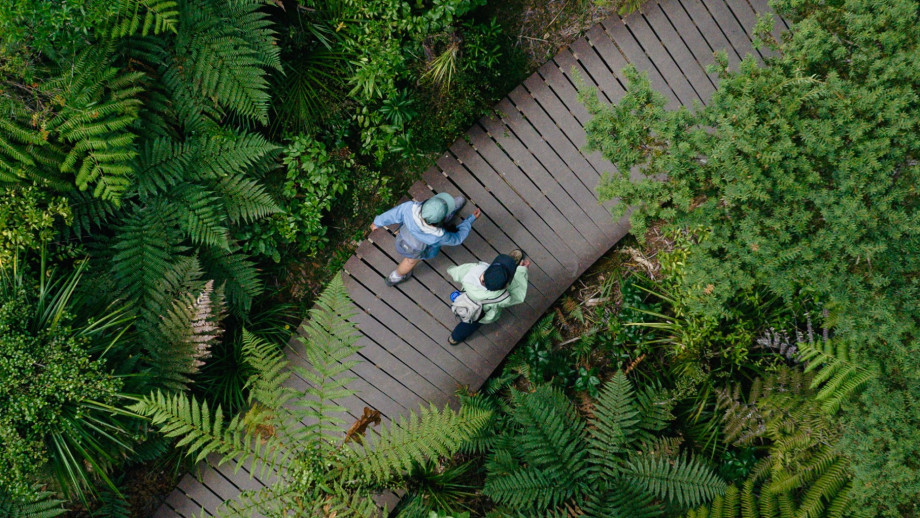Going into a Kauri forest?
We can all help to protect Kauri by following correct hygiene protocols when we go into Kauri forests.

About Kauri
Kauri are a taonga (treasure) of Aotearoa, New Zealand, and the third largest conifer in the world. Māori see the health of Kauri as an indicator of the wellbeing of the ngahere (forest) and the people.
Kauri are threatened by a soil-borne pathogen called Phytophthora agathidicida (PA), which causes the fatal condition known as kauri dieback disease.
To preserve Kauri for generations to come, 10 rules have been introduced as part of a National Plan to protect Kauri from the PA pathogen.
To protect Kauri when you’re visiting a Kauri forest area, you must:
- Clean your footwear and gear so it is dirt-free before you enter and leave.
- Stay on wooden or gravel tracks, or gravel roads, where you are not touching the forest floor.
- Use all hygiene stations you come across.*
For more information about how to walk, run, tramp or ride safely in a Kauri forest, see the flyers below.
Hunting or trapping off-track, or walking on the forest floor?
If you can’t stay on wooden or gravel tracks, or gravel roads in a Kauri forest, there is a risk you could spread the PA pathogen. You must:
- Carry a hygiene kit and use all hygiene stations you come across.*
- Clean dirt/organic matter off all items that may touch the forest floor before you enter the forest and again when you leave the forest. This includes tools, cars, bikes, sticks, shoes, gloves, and dog paws.**
- Avoid Kauri root zones. This is the area that extends about three times the radius of the tree’s canopy.
*If you don’t use hygiene stations, you could receive an infringement notice and fine, or a criminal conviction, according to rule 9 of the National Plan for Kauri. See National Plan rules summary.
**If you don’t clean these items, you could receive an infringement notice and fine, or a criminal conviction, according to rule 8 of the National Plan for Kauri. See National Plan rules summary.
For more information about moving or working safely off-track in a Kauri forest, including about hygiene protocols and hygiene kits, see the Kauri Ora: Hygiene Principles guide.
How do the National Plan rules work?
Tiakina Kauri is helping people understand and comply with the rules of the National Plan through education and awareness programmes.
In cases of clear and substantial or continued non-compliance with the rules, prosecution or infringement fees could be applied.